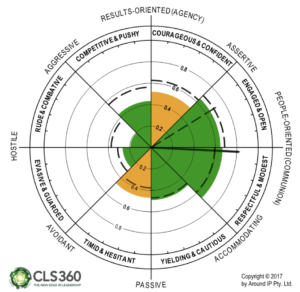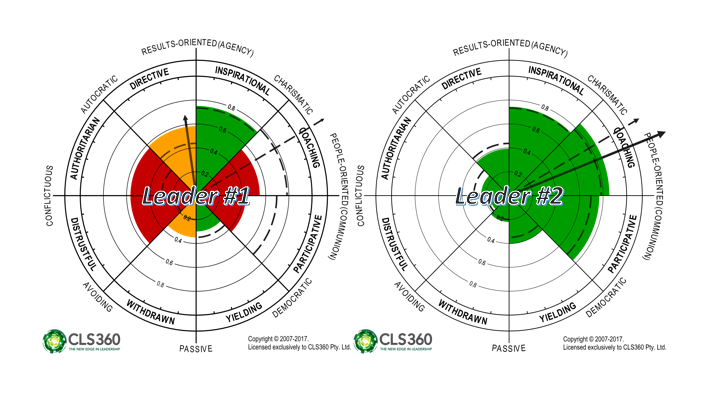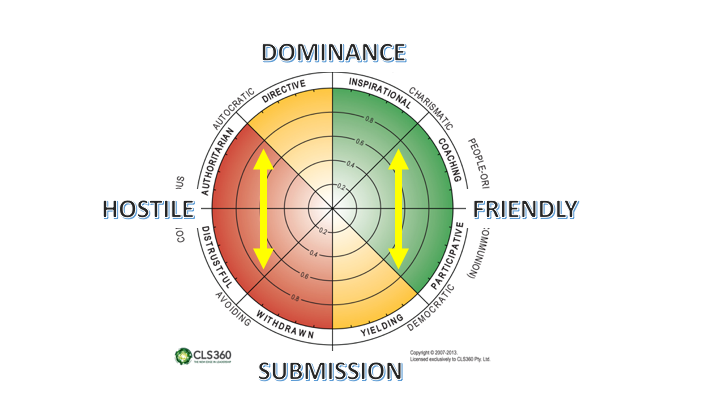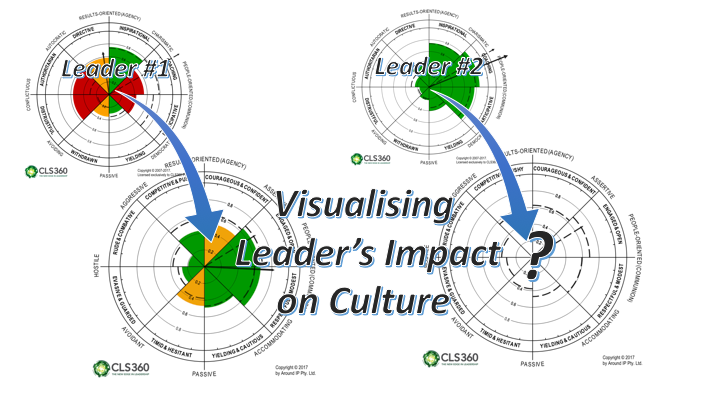It’s now a familiar adage that leadership drives culture, and culture drives performance, but it’s always fascinating to see the relationship clearly visualised in feedback results. Quentin Jones explains.
In a recent team culture workshop, we measured the team’s culture using the CTS (Circumplex Team Scan™). The culture – how people tend to behave towards each other – was reported by members as high on the culture style, Timid & Hesitant, and low on its opposite style, Courageous & Confident.
 When describing the Timid & Hesitant culture, team members reported they anxiously avoided appearing assertive and ambitious, and they prefered to remain inconspicuous and follow the lead of others.
When describing the Timid & Hesitant culture, team members reported they anxiously avoided appearing assertive and ambitious, and they prefered to remain inconspicuous and follow the lead of others.
When describing the low Courageous & Confident culture, team members reported they failed to act boldly, decisively, and fearlessly, and they are uncomfortable being assertive and taking charge.
Initially, we were surprised by the culture result because the current team leader’s leadership style – as measured by the Cirumplex Leadership Scan (CLS360) – reported high Coaching and Participative leadership styles. See Leader #1. However, during the workshop, it was revealed that the previous manager had led the team with a very different style dominated by high levels of Authoritarian, Inspirational and Distrustful. So, how did the previous leader’s style create the team’s current culture?

One important answer lies in emerging field of interpersonal theory and research.
Explaining how leaders impact culture
Donald Kiesler, and many other contemporary interpersonal circumplex researchers discovered that two meta-motives drive interpersonal behaviour – Communion and Agency. These motives orientate around two polar opposites:
Communion: Friendly versus Hostile
Agency: Dominance versus Submission
Further, interpersonal researchers have discovered two important ways these opposite interact – Similarity and Complementarity, and these mechanisms can help explain how leadership impacts culture.
A brief explanation of Similarity and Complementarity:
Similarity works with the Communion meta-motive, and predicts that being Friendly to another person draws or elicits a similar response of Friendliness. This Similarity principle also predicts that Hostility will draw Hostility in return, something unfortunately, we see all too much of in our world today.
Complementarity works with the Agency meta-motive, but instead of drawing a similar response it draws the opposite reaction, thus, a leader’s Dominance draws Submission on the part of the other person. Most interestingly, Submission will draw Dominance from the other person in the relationship.
Getting back to our team example, it appears that the leader’s Hostile Dominance behaviour has contributed to the team’s Hostile Submission culture. Specifically, the team’s Timid & Hesitant culture is likely a ‘Complementarity’ response to the team leader’s Authoritarian style. Most concerning, is the Hostile ‘Similarity’ response producing what appears to be a Hostile Submissive response at the bottom left of the circumplex. Concerning, because the styles located here consistently correlate with poor performance, and can be seen in staff being disengaged or ‘presentee-ism’, and in extreme cases correlate with counter productive work behaviours, such as, theft, ‘white-anting’, and undermining of the leader.
New Leader, New Team Culture?

What does the future hold for this team and its culture? This team development exercise was sponsored by a new team leader, who, when asked, agreed that the CTS results were a 100% reflection of the experience of the team’s culture. Working with the team using the CTS results to create change, the leader wants to remeasure the team’s culture in 3-months’ time.
It will be fascinating to come back in 3-months time to visualise the new team leader’s impact on the culture and whether it has changed. Looking forward to updating you on progress.
Where to from here?
Keep watch on our events page for future HR Roundtables and Workshops relating to Cuulture

Sources:
Horowitz, L. M., & Strack, S. (Eds.). (2011). Handbook of interpersonal psychology: Theory, research, assessment, and therapeutic interventions. New York: John Wiley & Sons.
Kiesler, D. J. (1996). Contemporary interpersonal theory and research: Personality, psychopathology, and psychotherapy. New York: John Wiley & Sons.
Redeker, M., de Vries, R. E., Rouckhout, D., Vermeren, P., & de Fruyt, F. (2012). Integrating leadership: The Leadership Circumplex. European Journal of Work and Organizational Psychology. Published online first: http://dx.doi.org/10.1080/1359432X.2012.738671 (free download).
Vermeren, P. (2014). Around leadership. Melbourne: Around Publishing Pty. Ltd.

